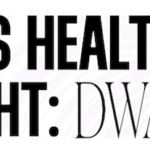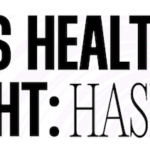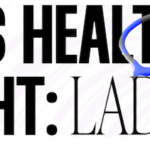Rebecca Cokley
Disability Rights Activist + Philanthropist
-
Women's Health Spotlight

ICYDK, every October is Dwarfism Awareness Month. 💚 Here to speak more on the condition is Rebecca Cokley (she/her), disability rights activist and philanthropist. When she’s not busy chatting with us, Rebecca oversees the first-of-its-kind portfolio at a major philanthropic institution that invests $10M per year to strengthen and support the disability rights movement and disability advocates.
Keep reading to learn about the different types of dwarfism, misconceptions surrounding it, and what advice Rebecca has for averages aka average-sized people.
There are multiple terms used to describe dwarfism, but what would you say are the preferred terms?
I think society often looks at dwarfism as solely a diagnosis, but we also have a culture. We have multigenerational histories, customs, and arts. We often refer to ourselves as “little people” or “people with dwarfism.”
Are there different types of dwarfism?
There are over 400 different types of dwarfism. I, like my parents and two of my children, have Achondroplasia, which is the most common form. Every form of dwarfism is different and has a different impact on a person. That’s why it’s critical that people with dwarfism have access to healthcare professionals and specialists that understand our needs and get exposure to other people with dwarfism.
A dwarfism diagnosis can be evident in utero, but that’s not always the case. How else is a diagnosis determined?
After a child is born, parents may notice the child isn’t growing as fast or may be missing some milestones like sitting up or walking “on time.”
Are there any health problems associated with your condition?
My kind of dwarfism comes with ear infections which typically go away in adolescence, but I still get them. Because every person is different, how their dwarfism impacts them may be different. When I was in kindergarten I had to have my legs straightened to improve my gait. Some people need to have back surgeries or hip replacements. It just depends.
As a disability rights activist and a disabled person, what are a few things that would help make the U.S. more accessible to those with disabilities?
Push for greater enforcement of the rights we do have. The Americans with Disabilities Act is 33 years old and yet it is still largely not enforced. Society likes to act like people with disabilities are whiny complainers when a business we want to frequent is not accessible, rather than ask why the business has refused to comply with a civil rights law that’s almost half a decade old.
Are there any misconceptions that you’d like to debunk about dwarfism?
If you watch reality TV shows, you don’t know people with dwarfism. We are not all entertainers. I’ve worked in the White House, I’ve advised presidential campaigns, I know little people who’ve worked on Wall Street, who are artists or teachers. Misconceptions feed into the discrimination we face.
What advice would you like to share with average-sized people about little people?
We know averages way better than they know us. Because we live in your world, we have to know you in order to exist in a space you built for your needs. Our wants and desires are the same as yours, just how we access things may be different. But we do need you to advocate for us, as allies, when it comes to our rights to education, employment, and healthcare.



